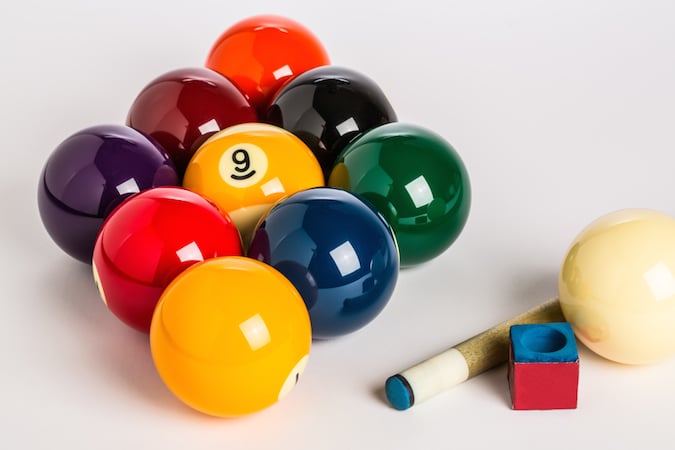Variations of Pool
image credit: Shutterstock.com
Pool is one of the most popular versions of cuesports around the world. Part of its appeal is that it is easier to play compared to snooker or billiards; and that there exists several variations of pool played globally. While the most common is eight ball pool and nine ball pool, there is also rotation pool and straight rail pool.
Rotation Pool
Also known as 61, rotation pool is one of the disciplines in cuesports that has been played in the Asian Games and SEA Games. At the start of the game, the 15 pool balls are grouped in a triangular rack with the no.1 ball at the apex of the rack, the no.2 ball at the right-corner base of the rack and the no.3 ball positioned at the left-corner base of the rack. The no.15 ball is placed at the centre of the rack while the rest of the balls are distributed at random.
In terms of game play, players must always strike and pocket the lowest numbered object ball on the table. This includes the break shot and failure to do so results in a foul and the incoming player may either play the next shot or ask the fouling player to shoot again. In both cases, the cue ball is shot from where it lies and on occasions where the cue ball is scratched (enters the pocket), then the game continues with the ball spotted on the baulk line. The player’s turn continues until he fail to pocket a shot, commits a foul or if a ball is pocketed illegally.
A player wins a game by scoring more points than the opponent. Usually, when a player reaches 61 points, the game is conceded, as it is impossible to beat this score. In rotation pool, the corresponding number on the ball that has been potted will be the points awarded to a player. For instance, if a player pots a ball with the number six, he is awarded six points. While players need to pot the lowest number ball available on the table, points will be counted if another ball is unintentionally but legally pocketed. No points are deducted in rotation pool but should a player hit three consecutive foul shots, they then forfeit the game.
Straight Pool
Known as 14.1 continuous or simply 14.1, this form of pool was the most popular competitive pool game until eight and nine-ball caught on. This variation is vastly different from other pool games, as the player is required to make known which object ball he intends to pocket, and which specific pocket he is aiming for before he takes a shot. This is known as the call-pocket rule.
If he does manage to pot the correct object ball into the correct pocket, he gains a point. Every ball in straight pool is worth one point, and players normally play until someone reaches a predetermined number of points. Unlike other cuesport games, the call-pocket rule applies to the break shot.
This means that the player must successfully pocket an object ball when he attempts to break the rack, or the cue ball and two extra object balls must touch a cushion. If the player fails to do so, he has committed a special foul, which will result in a loss of two points. In addition, players who commit three consecutive fouls in straight pool will see an extra loss of 15 points.
To receive the latest updates on the happenings in the Singapore sports scene, or to find out more about some of the latest programmes on offer at ActiveSG, like our Facebook page here.




